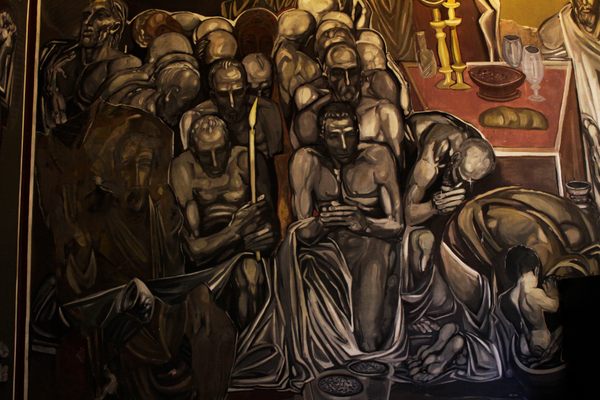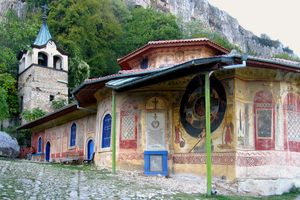About
To visitors walking uphill within Tsarevets Fortress to Ascension Cathedral, the structure looks like any medieval church, following a Byzantine design and topped with crosses. But the interior is unlike that of any other Christian building.
In the fifth century, the hilltop was already the site of a Roman basilica, and the cathedral was built in the 11th and 12th centuries, during the time of the Second Bulgarian Empire, among other buildings that made the stronghold a center of political and religious activity. But by 1393, troops of the Ottoman sultan conquered the fortress and destroyed the cathedral.
Nearly 600 years later, the cathedral was rebuilt on the same spot. At the time, however, the government was communist and officially atheist. The building was completed in 1981 to mark the state's anniversary, and when it opened to visitors in 1985, it was not for religious services, but for the frescoes and murals painted by Bulgarian artist Teofan Sokerov depicting the history of the Bulgarian state. Despite political changes in the country, Ascension Cathedral still has no altar and remains a museum rather than a church.
The frescoes have received mixed reviews. Some view them as impressive examples of social realism that demonstrate different periods of suffering and heroism of the Bulgarian people, while many religious people consider them disrespectful. Others highlight the unusual and modern approach that makes this church an important cultural landmark of Veliko Tarnovo. Irrespective of one’s religious views, the complex provides a good overlook of the town.
Related Tags
Community Contributors
Added By
Published
February 10, 2021

















































